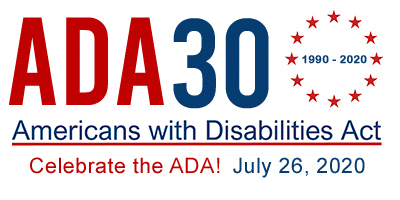 Title IV of the Americans with Disabilities Act (ADA) requires captioning of federally funded or produced public service announcements, and nationwide telecommunications relay services (TRS). In the last few decades, advances in voice, text and video relay service (VRS) technologies have further empowered individuals with disabilities by making available a much larger range of modes of communication.
Title IV of the Americans with Disabilities Act (ADA) requires captioning of federally funded or produced public service announcements, and nationwide telecommunications relay services (TRS). In the last few decades, advances in voice, text and video relay service (VRS) technologies have further empowered individuals with disabilities by making available a much larger range of modes of communication.
Relay services allow an individual who is deaf, hard of hearing or has a speech disability to engage in communication via telephone or two-way radio with a hearing individual, in a manner that is functionally equivalent to the ability of a person who does not have a hearing or speech disability. (Telephone and Relay Services – National Association of the Deaf)
Other assistive technologies also allow people with disabilities to access the Internet, entertainment activities and many classroom resources.
Below is a partial list of Assistive Technology devices:
Electronic pointing devices control the cursor on the screen without use of hands. Methods include using ultrasound, infrared beams, eye movements, nerve signals, or brain waves.
Sip-and-puff systems activate controls by inhaling or exhaling.
Light signaler alerts monitor computer sounds and alert the computer user with light signals. This is useful when a computer user cannot hear computer sounds or is not directly in front of the computer screen.
On-screen keyboards provide an image of a standard or modified keyboard on the computer screen that allows the user to select keys with a mouse, touch screen, trackball, joystick, switch, or electronic pointing device.
Reading tools and learning disabilities programs include software and hardware designed to make text-based materials more accessible for people who have difficulty with reading. Options can include scanning, reformatting, navigating, or speaking text out loud.
Screen readers are used to verbalize, or “speak,” everything on the screen including text, graphics, control buttons, and menus into a computerized voice that is spoken aloud.
Speech recognition or voice recognition programs enable people to give commands and enter data using their voices rather than a mouse or keyboard.
Text-to-Speech (TTS) or speech synthesizers receive information going to the screen in the form of letters, numbers, and punctuation marks, and then “speak” it out loud in a computerized voice.
Thanks to the ADA, modifications that offer access to all types of media are available for people with disabilities so they may take full advantage of information, education, entertainment and simple one-on-one communication with others.
Sources:
- Introduction to Web Accessibility – Web Accessibility Initiative
- Accessibility Technology and Tools – Microsoft
Celebrating 30 Years of the ADA
Join the ADA National Network on July 23 from 1:00 to 2:30pm (CT) for the webinar Digital Accessibility: What Have We Learned and What Does the Future Hold?
The authors of the Americans with Disabilities Act of 1990 (ADA) did not specifically reference information technology in the language of the law or regulations. Yet we know through guidance and interpretation through the various federal enforcement agencies and courts that the accessibility of the “virtual world” and devices and mechanisms utilized to access it are indeed covered by the law.
Join this session to look back at how these issues have been addressed, strategies that have been successful to achieve accessibility and compliance and lessons learned as well as explore what the future may hold as technology is quickly changing.